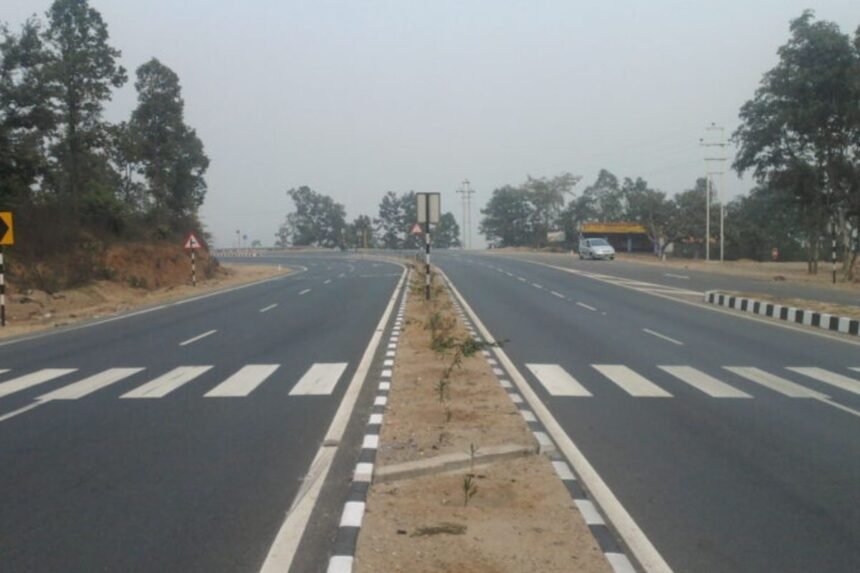Ranchi, October 16, 2024: The much-anticipated toll tax on the Ranchi Bypass four-lane road is set to commence soon, as preparations for its implementation reach advanced stages. The toll will apply to all vehicles using the stretch between Ranchi and nearby key locations like Jamshedpur and Ramgarh.
The National Highways Authority of India (NHAI) aims to establish toll plazas in strategic locations along the bypass, enhancing revenue generation for maintenance and infrastructure development.
Key Details of the Toll Implementation
The toll plaza, likely to be installed within the coming weeks, will be located on the Ranchi Bypass, a vital part of National Highway 33 (NH 33), which serves as a significant corridor connecting Ranchi with surrounding cities. Despite the road being inaugurated earlier, the toll collection has been delayed due to remaining utility work, which is now close to completion.
NHAI officials have confirmed that the toll collection will cover the four-lane bypass from Ranchi to Ramgarh, making it a crucial route for commuters. Once operational, vehicles traveling on this stretch will be required to pay toll taxes, a standard practice on major highways in India to ensure upkeep and further improvements to road infrastructure.
Why the Toll is Necessary
The Ranchi Bypass four-lane project has significantly reduced travel time and improved connectivity between key industrial and commercial hubs in Jharkhand, particularly Jamshedpur and Ramgarh.
With increasing vehicle load, toll tax is essential to maintaining the quality of the road and financing future expansions. The funds generated will be used for regular repairs, ensuring the road’s durability and smooth travel for thousands of commuters daily.
Impact on Commuters
Once the toll tax system is in place, commuters will face an additional cost for using the Ranchi Bypass. The charges will vary based on the type of vehicle, with commercial trucks and heavy vehicles expected to pay a higher amount compared to smaller vehicles and personal cars.
This system, however, will allow for quicker travel times and fewer delays due to road damage or traffic congestion, providing a clear benefit for those regularly using the route.
For local commuters who frequently use the bypass, the NHAI is considering introducing a discounted monthly or yearly pass system. This will reduce the overall toll burden on regular users while still contributing to the road’s maintenance and upgrades.
Project Background and Significance
The Ranchi Bypass is part of the larger NH 33 development project, which connects major industrial cities across Jharkhand. The bypass road, which links the Ranchi Ring Road, was constructed to alleviate congestion within the city and provide an alternate, faster route for long-distance travelers.
Initially opened to the public several years ago, the bypass has seen a surge in usage as more industries have set up in the region, and trade routes have expanded.
The introduction of the four-lane bypass was a critical infrastructural achievement for Ranchi, facilitating smoother and faster traffic flow between Ranchi, Ramgarh and Jamshedpur. However, due to some unfinished work regarding utility shifting and roadside facilities, toll collection was deferred. Now, with the road fully functional and essential work near completion, the NHAI is preparing to implement the toll tax regime.
Public Reactions and Stakeholder Opinions
While the toll tax has been long anticipated, it has garnered mixed reactions from the public. Some daily commuters have expressed concern over the additional costs they will incur, especially those who use the bypass for work-related travel.
However, many also acknowledge that the tax will contribute to better road conditions and quicker maintenance responses, which in turn leads to safer and faster travel.
An official from NHAI commented, “The toll tax is essential for maintaining the bypass in its current state. As traffic volume continues to increase, the funds collected will ensure the road remains in good condition without frequent disruptions due to repairs.”
A local resident, who regularly uses the bypass, stated, “The toll tax may seem burdensome at first, but if it means fewer potholes and smoother traffic, it’s a worthwhile expense. It will save us time in the long run.”
Future Plans and Developments
Beyond the toll tax, the NHAI has plans to further enhance the Ranchi Bypass and adjacent routes to accommodate future traffic growth. This includes potential expansions and the addition of more safety features such as better lighting, emergency services and signage improvements. These enhancements will further solidify the Ranchi Bypass’s role as a key infrastructure element in the region’s economic and industrial development.
Conclusion
The implementation of a toll tax on the Ranchi Bypass four-lane road is a significant development aimed at sustaining the infrastructure that serves thousands of commuters daily. While there may be initial concerns regarding costs, the long-term benefits, such as improved road conditions and faster travel times, make this a necessary step for the region’s continued growth.
As preparations move forward, commuters are advised to stay informed about toll rates and payment methods. With NHAI’s efficient management, the toll system is expected to streamline traffic flow and maintain high-quality travel routes for the foreseeable future.
Stay Updated with the Latest News in Jharkhand!
Be the first to know every important news, from Jharkhand Politics to Jharkhand News. We keep you prepared for every moment. Follow us for Breaking News in Jharkhand and never miss out on Jharkhand Trending Topics!
Stay connected with Jharkhand Headlines!






